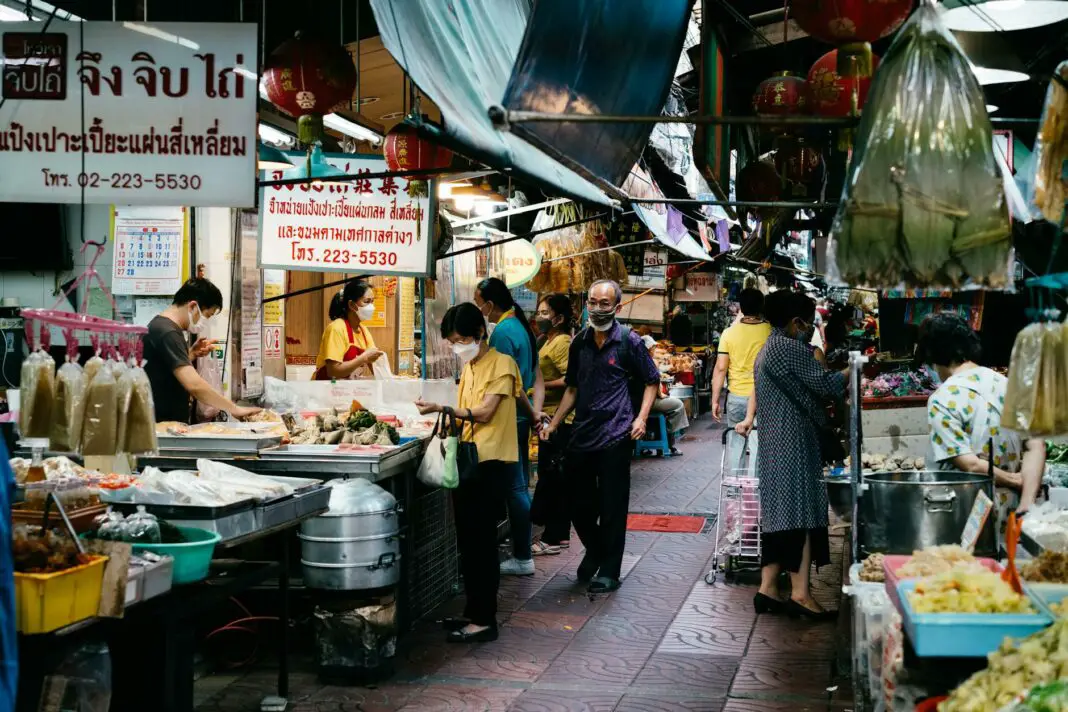A trip to Thailand is more than just a journey; it’s an experience that immerses you in vibrant culture, stunning landscapes, and delightful cuisine. In this exploration, we will delve into the bustling markets of Thailand, focusing on the art of bargaining. Are these bargaining secrets the key to a rewarding experience in Thailand’s local markets? This blog aims to answer that question while providing you with essential insights and tips for your travel adventure. Get ready to uncover the cultural nuances behind the bargaining game and learn how to navigate the markets like a seasoned traveler.
From the colorful stalls of Chatuchak Weekend Market in Bangkok to the floating markets of Damnoen Saduak, the essence of Thai local life is beautifully captured in its markets. Not only can you find unique treasures, but you also have the chance to engage in the thrilling dance of haggling. Understanding the tactics used in bargaining can lead to not only lower prices but also a more authentic interaction with local vendors. Dive deeper into this guide to learn not only the techniques but the cultural significance behind them.
Table of Contents
- Understanding the Bargaining Culture in Thailand
- Top Markets to Visit and Where to Find Them
- Effective Bargaining Tips for Travelers
- Real-Life Examples of Successful Bargaining
- The Benefits of Bargaining Beyond Savings
- Mastering Your Market Experience
- Engaging with Vendors: The Human Connection
- Insider Knowledge: Understanding Local Pricing
Understanding the Bargaining Culture in Thailand
Thailand possesses a rich, complex culture that heavily influences the bargaining process within its markets. Unlike many Western countries where pricing is often fixed, Thai markets flourish with a lack of standard pricing, placing power in the hands of both the vendor and the customer. This interactive experience is woven into the social fabric of Thai life, as negotiation is not merely about transactions but about relationships. When you enter a market, remember that your ability to bargain can change the dynamics of your experience.
Engaging in bargaining fosters a sense of camaraderie and respect between you and the vendor. It’s not just about getting a better price; it’s about participating in a cultural exchange that values personal interaction. Therefore, try to embrace the nuances of this lively practice with an open heart and mind. The overall atmosphere is often lighthearted, with vendors appreciating good humor and genuine conversation. Understanding this cultural significance can transform your market visits from mere shopping to enriching experiences.
Top Markets to Visit and Where to Find Them
When exploring Thailand, various markets beckon travelers with their unique charm and offerings. One must-visit destination is the ever-popular Chatuchak Weekend Market in Bangkok. Known as one of the largest weekend markets in the world, it boasts over 15,000 stalls featuring everything from fashion and art to delicious street food. The thrill of navigating its labyrinthine layout adds to the excitement of discovering hidden gems, making it a shopper’s paradise.
In contrast, if you’re seeking a more traditional experience, don’t miss the Damnoen Saduak Floating Market. Here, vendors float along the canals selling fresh produce, handmade crafts, and local delicacies. The vibrant colors and fragrant aromas create an unforgettable sensory experience that should not be overlooked. Furthermore, the Chiang Mai Night Bazaar offers a lively atmosphere filled with artisans, cultural artifacts, and street performances. Each market tells a different story, providing insight into Thailand’s rich heritage and diverse offerings.
Effective Bargaining Tips for Travelers
Mastering the art of bargaining in Thailand can significantly enhance your travel experience. To begin with, always approach the negotiation process with a friendly attitude. A smile goes a long way in Thai culture. Engage the vendor in light conversation before discussing prices. This builds rapport, making them more inclined to offer you a better deal.
Additionally, don’t be afraid to ask questions about the products. This not only shows your interest but also positions you as an informed buyer. Start your bargaining at around 50% of the asking price, gradually increasing your offer as negotiation entails back-and-forth movements. Being assertive yet respectful is key; aggressive bargaining can be frowned upon. Finally, practicing patience is crucial. If you aren’t happy with the final price, feel free to walk away. Vendors frequently call you back with a better offer, making walking away one of the most powerful bargaining tactics available.
Real-Life Examples of Successful Bargaining
To illustrate how effective bargaining can transform your market trips, let’s consider some real-life instances. A traveler visiting the Chatuchak Weekend Market was initially quoted 200 Baht for a pair of handmade sandals. Applying the previously discussed tips, they engaged in a friendly conversation with the vendor, discovering that the sandals were locally crafted. After some back-and-forth negotiation, they managed to purchase the sandals for just 80 Baht!
Another traveler experienced a delightful interaction at a floating market. After expressing admiration for a colorful array of fruits, the vendor quoted a sweet price but remained firm. By playfully complimenting the vendor’s skill and negotiating respectfully, they managed to lower the price by a third, securing a luscious selection of mangoes at a fraction of the initial cost. These stories highlight how embracing the cultural practice can lead to not only financial benefits but also memorable experiences.
The Benefits of Bargaining Beyond Savings
The advantages of engaging in this tradition extend far beyond merely saving money. By participating in the bargaining process, you not only develop negotiation skills that are socially and culturally relevant but also foster genuine connections with local people. Such interactions can offer unique insights into Thai culture, allowing travelers to gain a deeper understanding of local customs and practices.
Moreover, the thrill of the chase invigorates your shopping experience, making market visits exciting adventures. Every interaction builds confidence, teaching you to navigate challenges more effectively. Engaging in bargaining can also lead to surprising discoveries: you may find that vendors are willing to share stories about their crafts or the history behind their merchandise, thereby enriching your journey and creating lasting memories.
Mastering Your Market Experience
To elevate your market experience, consider addressing some insider tips that can bring out the best in your shopping adventures. Begin by visiting markets early in the day for more selection and a bustling atmosphere. Avoid peak hours when crowds can detract from your experience, making it harder to connect with vendors. Also, dress casually; it eases conversations and displays approachability.
Having cash available in small denominations can streamline the negotiation process, making it easier for both parties. While bargaining, maintain a calm demeanor. High-strung energy can signal desperation, leading to higher prices. It’s essential to remain positive throughout the process, even if negotiations don’t go as planned. A good attitude is contagious, and vendors often appreciate humor and light-hearted exchanges, resulting in more favorable outcomes.
Engaging with Vendors: The Human Connection
A successful trip to Thailand’s markets transcends simple transactions; it is rooted in fostering relationships with local vendors. Approaching vendors as people rather than mere sellers can create more enjoyable experiences. Make an effort to view the items through their eyes. Authentic appreciation for their craftsmanship can often soften their stance on pricing, resulting in a more amicable atmosphere.
Moreover, learning a few basic Thai phrases can significantly enhance your interactions, demonstrating your respect for their culture. Highlight your interest not only in their products but also in their stories. Many vendors love to share the history or significance behind their craft, offering you a deeper insight into the cultural heritage that each item represents. Connecting in this way transforms bargaining from a mere transaction into a shared cultural experience that enriches your journey.
Insider Knowledge: Understanding Local Pricing
One of the most fascinating aspects of shopping in Thai markets is the fluidity of pricing. Prices can vary widely based on location, season, and vendor. Gaining an understanding of local pricing can aid in developing your bargaining strategy. For instance, you might find that craft items in Chiang Mai are generally more affordable than similar goods in Bangkok due to differences in tourist traffic and supply chains.
Additionally, seasonal fluctuations can also play a role in bargaining. Traveling during the off-peak season often means lower prices and greater flexibility among vendors eager to attract customers. Observing patterns in pricing across various markets can provide beneficial insights into what constitutes a reasonable offer. To prepare yourself, spend some time researching local market trends and asking fellow travelers for their experiences prior to embarking on your shopping adventure.
Embracing the Market Experience
The beauty of navigating Thailand’s markets lies in the adventure of the unknown and the joy of discovery. Embracing the intricate dance of bargaining unlocks doors to cultural experiences that often elude mere shoppers. Each transaction is not just about buying a product but about connecting with Thailand’s vibrant lifestyle, weaving memories that last long after your visit ends. Markets present a stage where you can showcase your skills, learn from locals, and leave with not only souvenirs but also hearts filled with stories.
In your pursuit of unique items and unforgettable anecdotes, remember the significance of respect in these interactions. The vibrancy of Thailand, embodied in its markets, awaits you with open arms. Give in to the allure of exploring local offerings and embrace the thrill of bargaining, as you craft your own tales to share upon your return. Thailand’s markets are not just places to shop; they are cultural spectacles where every encounter has the potential to enrich your journey.
Frequently Asked Questions
What is the best time to visit Thailand’s markets?
The ideal time to visit is early morning, especially on weekends, to beat the crowds and get the best selection of items before the heat sets in.
Do vendors expect bargaining in Thailand?
Yes, vendors typically expect you to haggle. It’s a common practice, and they often set initial prices with the anticipation that customers will negotiate.
How much should I start my bargaining price?
A good starting point is about 50% of the vendor’s initial asking price. This sets the stage for a back-and-forth negotiation process.
Are there any items that are fixed-price?
While most market goods are negotiable, certain food items, especially those pre-packaged, may have set prices and are not meant for bargaining.
Can I only pay in cash at markets?
Most vendors prefer cash, particularly in local markets. Having small denominations on hand is beneficial for smooth transactions.
Will language be a barrier during bargaining?
While a language gap may exist, many vendors understand basic English terms, and learning a few Thai phrases can enhance your experience significantly.
Image Credit: Pexels





